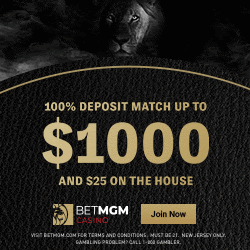To a card counter, one of the key issues is not casino surveillance, but money itself and the way to manage it. History has revealed many cases when card counters vanquished their bankrolls and needed to start anew. To place bets way too larger than what their bankroll could endure is a major problem for card counters. Many of them tend not to be aware of how significant the risk of ruin for their particular game is. Others tend to switch between games while forgetting to modify their bet sizes and as a result of that, they end up playing to a far higher risk of ruin than they think. In addition, there are players who tend to use quite inappropriate playing strategies for particular games. And last but not least, there are people who believe that playing blackjack is an endeavor, which could generate an overall gain of no more than 1%-2%.
So, what conclusion is to be drawn – that there is vast ignorance among players regarding matters such as bankroll management and the art of gaining the blackjack advantage. As a pure percentage, the advantage to a blackjack player will never be very huge. One, who wins on a regular basis and at a rate of 1% or 2%, does a fine job, in fact. The general misconception lies in the fact that there are people who tend to compare such a performance to the current interest rate levels. Those two are not to be equalized.
Now, let us discuss a number of terms related to money management in blackjack.
A glance at money management terms
First, when we talk about bankroll, we can refer either to the total amount of funds one is willing to put at risk playing blackjack, or to a trip bankroll, which represents the total money amount one brings with him/her during casino visits for a single trip.
Second, the base betting unit, or just the unit, is the smallest money amount, which one would place as a bet on a single hand. Such a unit may be $10, or $200 or any other amount. It represents the base bet one makes.
Best Online Blackjack Bonuses
Third, the bet spread represents the range, within which one makes his/her bets. In case he/she uses a bet spread of 1-3, this means he/she bets anywhere between 1 to 3 units on each hand during his/her play. If a player uses a betting unit of $10, then his/her bet spread will be within the range of $10 to $30.
Fourth, the betting ramp denotes how ”steep” one’s bet spread is. In case he/she uses a bet spread of 1-12, he/she may bet 1 unit for neutral or negative counts, 2 units for a count of +1, 4 units for a count of +2, 8 units for a count of +3, or 12 units for a count of +4. If a steeper betting ramp is employed, then the player will bet 1 unit to 6 units to 12 units, respectively.
Risk of Ruin and Standard Deviation
Building up and Securing the Bankroll
Approaches Utilized by a Card Counter
Making a Proper Selection of a Game
Appropriate Games
All these bets are actually initial bets placed on a single hand, or they exclude the additional wagers, which a player may place when splitting or doubling down hands. A more aggressive play would be, if one places 12-unit bets on one hand at first until he/she ends up doubling down and splitting from that hand to the point where he/she has 96 units bet. That would still be a bet spread of 1-12, as it determines the initial bet on the hand and not the potential total, which could be bet in such a case.
A potential long-term yield
A number of typical games could generate a rate of return of about 1.25% of the total amount of money wagered. In case a player participated in such a game and placed an average bet of $100, then he/she might anticipate to score a profit of $125 per hour in a 100-hands-per-hour game. If he/she participated in a four-hour play session, his/her profit expectation would be $500. In case the player’s highest bet was $500, he/she would need to participate with at least $6 000 in such a play session. If we assume these $6 000 were an investment, for four hours of play he/she would get a return rate of 8.33%. If he/she played for as long as 500 hours per year, his/her profit expectation would be $62 500. A bankroll of $100 000 would be exposed to a relatively low risk of ruin in such a case, while the player would expect an annual rate of return of 62.5% on his/her $100 000 investment.
Such a scenario could develop in a long-run, while in a shorter term the player could expect anything. If a player participated in a four-hour session, he/she could profit $500, but due to three standard deviations for such a session, he/she might find himself/herself within the range of -$6 000 to $7 000.
A player can expect to be in the long run, when he/she has amassed sufficient number of hours of play, so that he/she can neutralize three standard deviations of potential loss. It depends on the bet spread, the betting ramp and the play style, which one uses. There has been a statement among blackjack experts that a total of about 300 000 hands would be enough to cover the majority of situations. A professional player is able to achieve such a number of hands in 4 years, or even less. It depends on how many hours per month or per year he/she plays. To an ordinary blackjack player such a number of hands may seem a bit overwhelming. Because of it, some players may see card counting as not that worth the time it requires to learn. However, we should note that in a short term the card counter has the advantage, if he/she participates in any fair game. And what is also important to mention – according to experts, in 56% of the time an astute card counter could expect to gain profit or at least get to breakeven in 8 hours of play.















